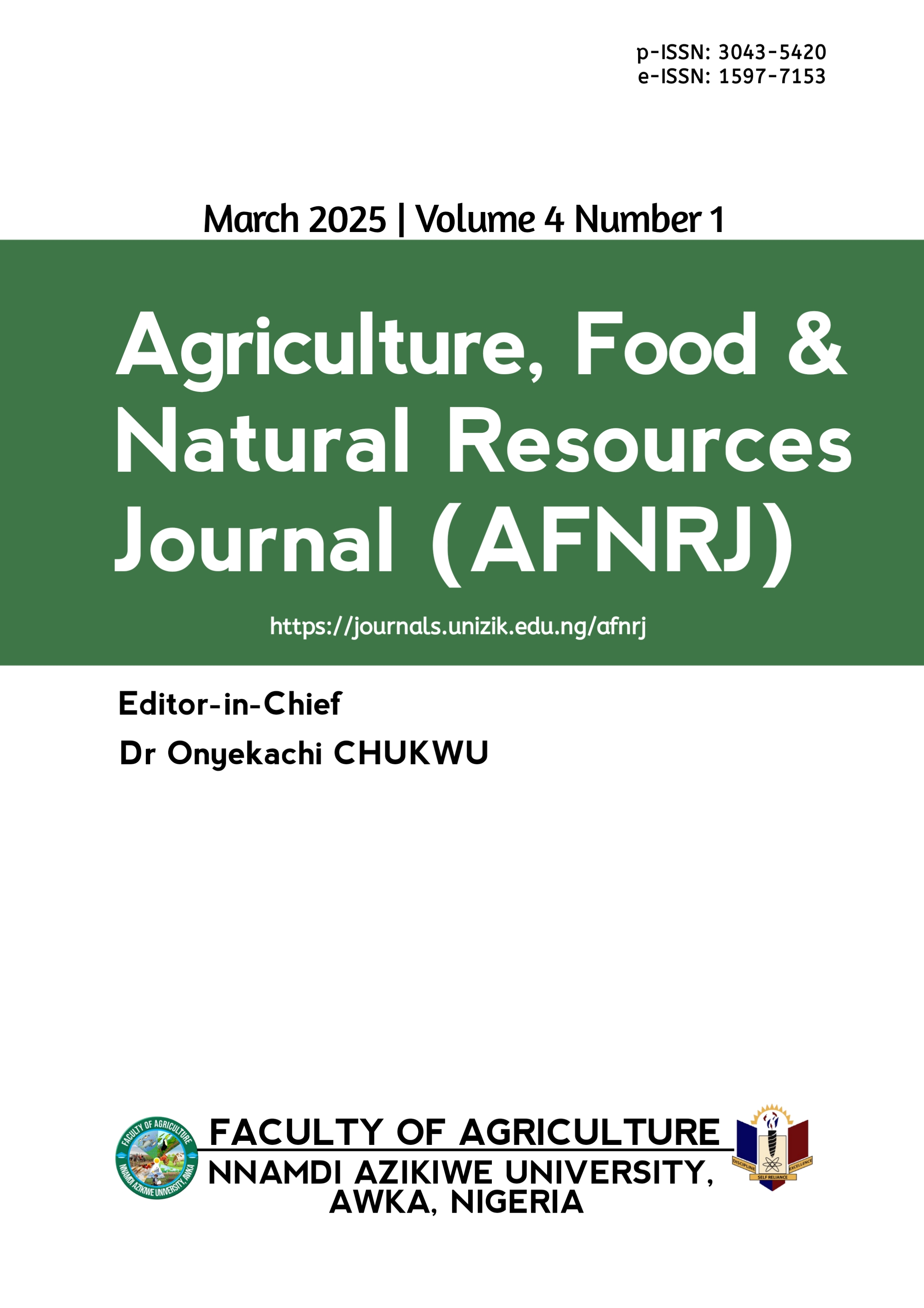Contributions of Fadama NG-CARES programme on livelihoods of beneficiaries in Kwara State, Nigeria
DOI:
https://doi.org/10.5281/zenodo.15115290Keywords:
Beneficiaries, Contributions, Farmers, Fadama, Livelihoods, Ng-Cares programmeAbstract
The COVID-19 pandemic outbreak significantly affected the livelihoods of many rural people, mostly within the agricultural sector in Nigeria. The Nigeria COVID-19 Action Recovery and Economic Stimulus (NG-CARES) Programme, implemented as an extension of the National Fadama Development Project, aims to lessen these effects by providing immediate support to susceptible farmers. This study assesses the contributions of the Fadama NG-CARES programme to the livelihoods of rural households in Kwara State, Nigeria. The sampling procedures involved 3-stage random sampling of 180 beneficiaries. The data was collected through the use of a structured questionnaire. The data was analysed using descriptive statistics such as frequency count, mean score, and standard deviation. The result revealed that the mean age of the beneficiaries was 56.2 years, about 70.6% were male, about 68.9 % of the respondents had formal education, and the average annual income of the farmers was 370,138 Naira. The highest ranked contribution of Fadama NG-CARES programme to the farmers was the provision of food, nutrition, and safety extension services (mean = 3.06). About 76.7% of the respondents have a moderate level of contribution of the Fadama Ng-Cares Programme to the livelihoods of beneficiaries. The most severe constraint was the unpredictable rising cost of inputs (mean=3.13). The study recommends that there should be constant reviewing to identify gaps and expansion of the programme so as to accommodate more farmers that need such intervention, and there should be provision of financial support and resources to the beneficiaries.
Downloads
Published
Issue
Section
License

This work is licensed under a Creative Commons Attribution 4.0 International License.
which permits unrestricted use, distribution, and reproduction in any medium, provided the original author and source are credited.
Authors retain the copyright of their published work in the AFNRJ.





